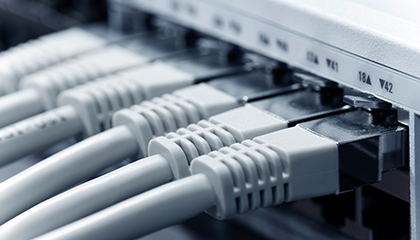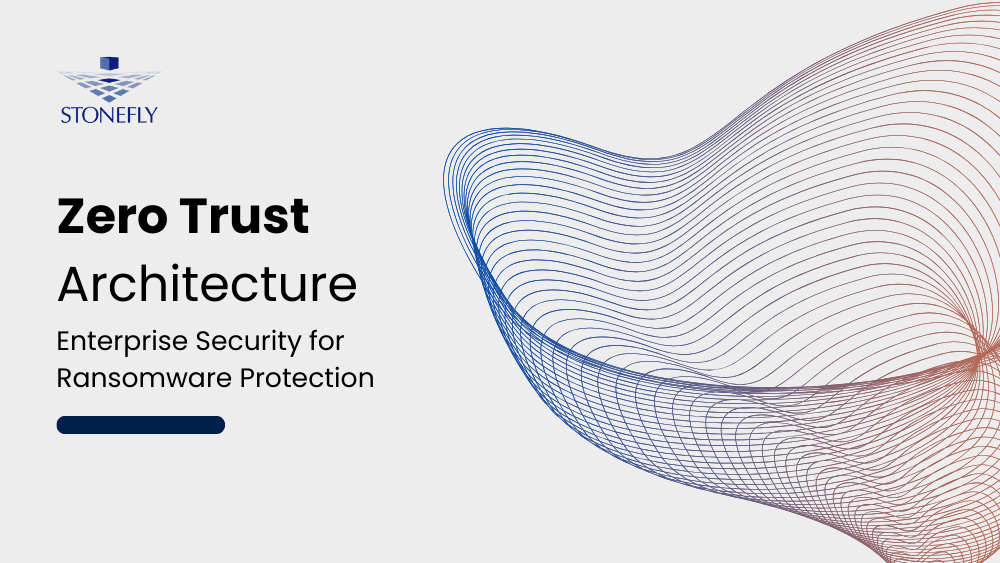iSCSI is an acronym that stands for Internet Small Computer System Interface. It is a storage area networking (SAN) protocol used to send block storage from storage arrays or devices to client computers that aren’t directly connected to those devices.
How iSCSI works?
When a structured workload (databases, end user applications like SAP, Microsoft Exchange, etc.) initiate a request, here’s what happens on the source and receiving ends of the iSCSI system:
On the source side, when an end user application initiates a request to the operating system, an appropriate SCSI command and a data request are generated, which then go through encapsulation and encryption (if configured). A packet header is added to the request, and the resultant IP packets are transmitted over an Ethernet connection.
On the receiving side, when the packet is received, it goes through a decryption process (if encrypted before transmission) and disassembling of the packet takes place where SCSI commands and the request are differentiated. The SCSI commands are then sent to the SCSI controller and from there they are diverted to the SCSI storage device.
It is a known fact that iSCSI is a bi-directional protocol and so it can also be used to return data in response to the original request as well.

iSCSI Targets and iSCSI Initiators
An iSCSI storage area network consists of iSCSI targets on storage array controllers and iSCSI initiators on storage clients. These targets and initiators are used by the iSCSI protocol to connect storage to clients and are represented by a unique name called the iSCSI Qualified Name or IQN.
Computer operating systems include or can be installed with iSCSI clients and initiators. While some storage arrays are designed to only provide storage over iSCSI, many storage devices come equipped with iSCSI targets in addition to other common protocols.
Some high-speed network switches include a technology called Data Center Bridging, which makes it easier to support storage traffic and standard network traffic on the same switch ports. This is done by creating rules for quality of service. These rules define how much bandwidth each type of network traffic is allowed to consume.
In order to provision iSCSI storage an iSCSI client will typically need to be installed or activated on the client computer. The method to do this varies by operating system but is generally fairly easy. iSCSI client initiators are then added to initiator groups for iSCSI client definitions on the storage device. The name for this grouping of initiators may differ from vendor to vendor but its purpose is the same. These initiated groups are used to identify which clients may connect with storage targets.
An iSCSI LUN is created on the storage device and assigned to an initiator group or client definition at this point assuming the target and initiator are on the same IP network, the client may be able to automatically discover the target. Once the initiator is connected to the target, the iSCSI LUN at that target IQN is available for use by the client.
iSCSI LUNs are configured and used the same as any other block storage by the client operating system. The iSCSI protocol supports many features to improve security and performance.
Benefits of using iSCSI
With the combination of SCSI, Ethernet and TCP/IP, iSCSI offers the following benefits:
- As iSCSI is built on stable and familiar standards, most of IT staff are familiar with the technology.
- iSCSI creates a SAN, which in turn reduces the Total Cost of Ownership (TCO). As SAN systems are easy to install and require less maintenance due to the involvement of TCP/IP, the need for hiring specialized personnel is eliminated; consequently, the costs are considerably reduced.
- As Ethernet transmissions can travel over the IP network, there will be no practical distance limitations.
- iSCSI deployment offers a high degree of interoperability. So, it reduces disparate networks and cabling as it can be achieved through Ethernet switches instead of the specialized hardware of Fibre Channel (FC) switches which are high on price factor as well.
- Unlike fiber channel, iSCSI doesn’t operate over a separate network protocol. It transmits data using the TCP/IP protocol over familiar Ethernet networks that are supporting network traffic in data centers right now.
- Little or no investment in new network technology is needed to start using an iSCSI SAN. However, some deployments of dedicated iSCSI networks or subnets to maximize the bandwidth available for storage. It is also common for an iSCSI network to be deployed on fast Ethernet such as 10 Gigabit (or more) optimized performance and IOPS.
- The iSCSI protocol supports many features to improve security and performance such as immutable snapshots, deduplication, thin provisioning, etc.
Implementing iSCSI Storage
In order to provision iSCSI storage an iSCSI client will typically need to be installed or activated on the client computer. The method to do this varies by operating system but is generally fairly easy.
iSCSI client initiators are then added to initiator groups for iSCSI client definitions on the storage device. The name for this grouping of initiators may differ from vendor to vendor but the purpose is the same. These initiated groups are used to identify which iSCSI clients can connect with the iSCSI storage targets.
Once the client initiators are configured, an iSCSI LUN (Logical Unit Number) is created on the storage device and is assigned to an initiator group or client definition. At this point, assuming the target and initiator are on the same IP network, the client may be able to automatically discover the target. Once the initiator is connected to the target, the iSCSI LUN at that target IQN is available for use.
iSCSI LUNs are configured and used the same as any other block storage by the client operating system.
StoneFly’s 8th Gen IP SAN iSCSI Storage Systems
As the original innovator of the iSCSI storage protocol, StoneFly started shipping IP SAN storage systems in 2002. Currently in their 10th gen, StoneFly iSCSI storage systems are available as integrated SAN appliances (ISC™ – Integrated Storage Concentrator) and high availability SAN systems (Voyager SAN) with support for multi-core Intel Xeon processor(s), high speed 10/40/100Gb iSCSI or optional 8/16Gb Fibre Channel (FC) ports, and terabytes to petabytes of storage capacities.
Powered by StoneFly’s patented SAN operating system (StoneFusion), StoneFly SAN systems come preconfigured with advanced features such as immutable snapshots, thin provisioning, deduplication, and more.
StoneFly IP SAN systems are available at different price points and proportional performance capabilities making them suitable for SMBs, SMEs, and large enterprises – and a diverse range of applications and use-cases.






